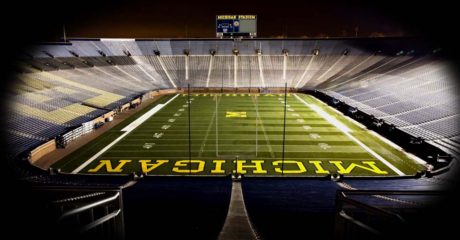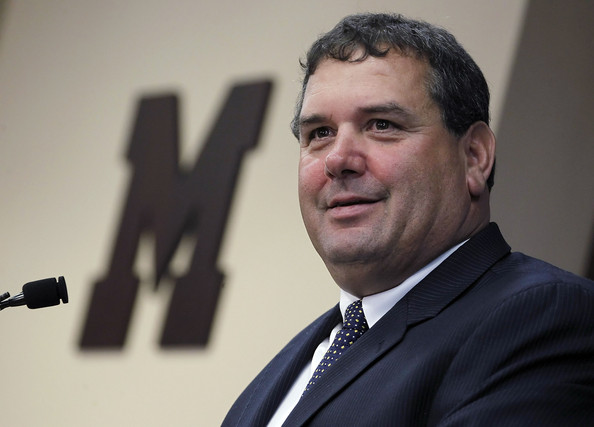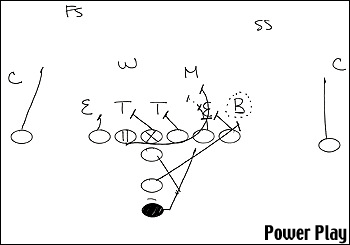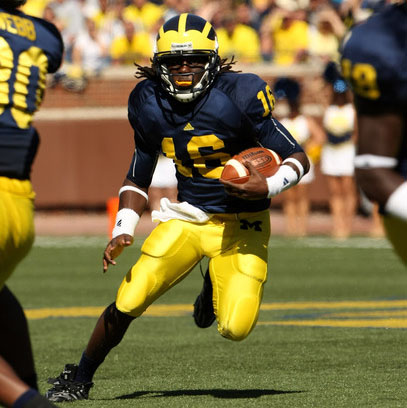Five Questions for the Spring Game
 |
| Michigan fans should keep a close eye on sophomore safety Carvin Johnson (#13) this Saturday |
Everybody else is doing it, so I might as well join. These are the five things I’m most interested to see on Saturday.
1. Who will play free safety? And will they be any good at it?
I am on the record as thinking Ray Vinopal should be the starting free safety in 2011. Of course, Vinopal transferred to Pitt a few weeks ago, and now there will be another brand new starter at FS this year. Nobody appears to want the starting job; the punishment for earning the job is a broken ankle (Troy Woolfolk), transferring to a Big East school (Vinopal, Ryan Mundy), or public embarrassment and a forced position change to linebacker (Cam Gordon, Steve Brown).
Sophomore Carvin Johnson will be the likely starter at FS on Saturday. He hasn’t quite earned the hype that Gordon earned in spring last year, but that didn’t turn out so well for Michigan, so maybe practice observers are showing some restraint when evaluating the safety position this year. I have some questions about Johnson’s long-term viability at the FS position – he’s more of a strong safety, in my opinion – because of his speed. But Brandent Englemon wasn’t particularly fast, either, and I would be ecstatic if Johnson played as well as Englemon did in 2007.
2. Which of the running backs emerges from the pile?
I’m also on the Michael Cox bandwagon, which you probably know if you’ve ever visited the site before. Last year Cox was the most impressive runner in the spring game (unofficially, he had 6 carries, 38 yards, and a 22-yard TD run). For some reason unbeknownst to me, the number of carries he got in the spring game matched his entire 2010 regular season total, too (6 carries, 56 yards). In competitive situations, that gives Cox approximately 25 carries, 207 yards, 3 touchdowns, and 3 rushes of 20+ yards (I don’t have stats for the 2009 spring game).
But I’ve been touting Cox as the team’s best runner since late 2009, so my opinion clearly doesn’t carry much weight with the coaching staff. Other options include Stephen Hopkins, who has reportedly shared first team duties this spring with Cox; Michael Shaw, who’s really fast and not much else; and Vincent Smith, who’s average at everything except height. I don’t really know which one will come out of the spring looking the best, and the coaches have essentially stated that nobody has separated himself from the pack. For now I’m expecting to see Cox have the most impressive day, but I’m trying to have an open mind.
3. Who’s going to play WILL?
Maybe I’m the only one, but I’m pretty nervous about the weakside linebacker position going into the 2011 season. For all the criticism of Jonas Mouton the past couple seasons, I think he would have been perfect as an inside linebacker in this defense. Unfortunately, he’s graduating just as a suitable defense and coaching staff gets installed. Meanwhile, his potential replacements include converted safeties, a transfer, and a guy poking his head out of the doghouse.
The starting WILL seems to be redshirt sophomore Mike Jones, a 208-pounder who looks like a safety walked up to the line of scrimmage. But no, really, he’s a linebacker. In case you’re wondering, that’s approximately seven pounds lighter than Steve Brown was back in 2009 when he was an undersized outside linebacker. Brandin Hawthorne, another converted safety, has seen some time at WILL but is even smaller at 203 lbs. Marell Evans transferred back to Michigan from Hampton and has one year of eligibility left. And finally, redshirt sophomore Isaiah Bell has seen a bit of playing time on the weakside, but he doesn’t seem to be like a viable option.
Evans might be your starting WILL in September, but with incumbent MIKE starter Kenny Demens out this spring with a shoulder injury, the Hampton transfer has reportedly been the #1 middle ‘backer. I’ll be curious to see how Jones and the others stand up to linemen and fullbacks, but hopefully they can channel some Ian Gold and Larry Foote action.
4. Will we see any positive signs from William Campbell?
In all honesty, Campbell ought to have been a redshirt freshman in 2010. If that were the case, it wouldn’t be quite so concerning that he hadn’t done much on the field yet. But now he’s going to be a junior, and he had better start producing soon if it’s going to happen. I really can’t think of a better staff in college football to get the most out of Campbell, so if it’s going to happen for the big guy, this is his chance. I’m not that familiar with defensive line coach Jerry Montgomery, but head coach Brady Hoke and defensive coordinator Greg Mattison both have outstanding track records with defensive linemen.
I mean no offense to Ricky Barnum – or whoever’s lined up opposite of Campbell – but if there’s anyone I hope to see get destroyed on Saturday, it’s him. If Campbell can turn into a playmaker at the 3-tech DT position, that takes some of the pressure off Michigan’s rush ends and undersized weakside linebackers. I have a hard time seeing someone with Campbell’s outsized body and personality fade into obscurity, so let’s hope his play matches his gusto.
5. Will Denard tie his shoelaces? How close will the quarterback competition be?
I have no doubts that Denard Robinson will be the starting quarterback on Saturday. You don’t bench a Heisman candidate that quickly, no matter how good the backup plays. I didn’t believe the Devin Gardner hype in spring 2010 because true freshmen simply aren’t very good, but now . . . I might put some stock in it. Gardner has always seemed to be a better fit in a pro-style offense than the spread, so I think this offense suits him more than Robinson. Denard’s decision-making and accuracy scare me a little bit, although I admit his improvement from 2009 to 2010 was pretty incredible. There’s a possibility that he will make a similar leap in 2011, but last year’s spring practice reports about Denard were glowing. This year’s . . . not so much.
Gardner has the stature, the arm, and the poise to be a franchise quarterback. In the long run, I fully expect him to be a better signal caller than Robinson. Whether that happens in 2011, 2012, or beyond, I think #7 will carry on the tradition of great Michigan quarterbacks. The problem with the QB situation is that even if Gardner proves to be the best quarterback on Saturday (and in August practices), Michigan doesn’t have the depth at the position to move Robinson to running back or wide receiver. Perhaps the two best athletes on the team are Michigan’s only two quarterbacks. I can think of worse problems.




